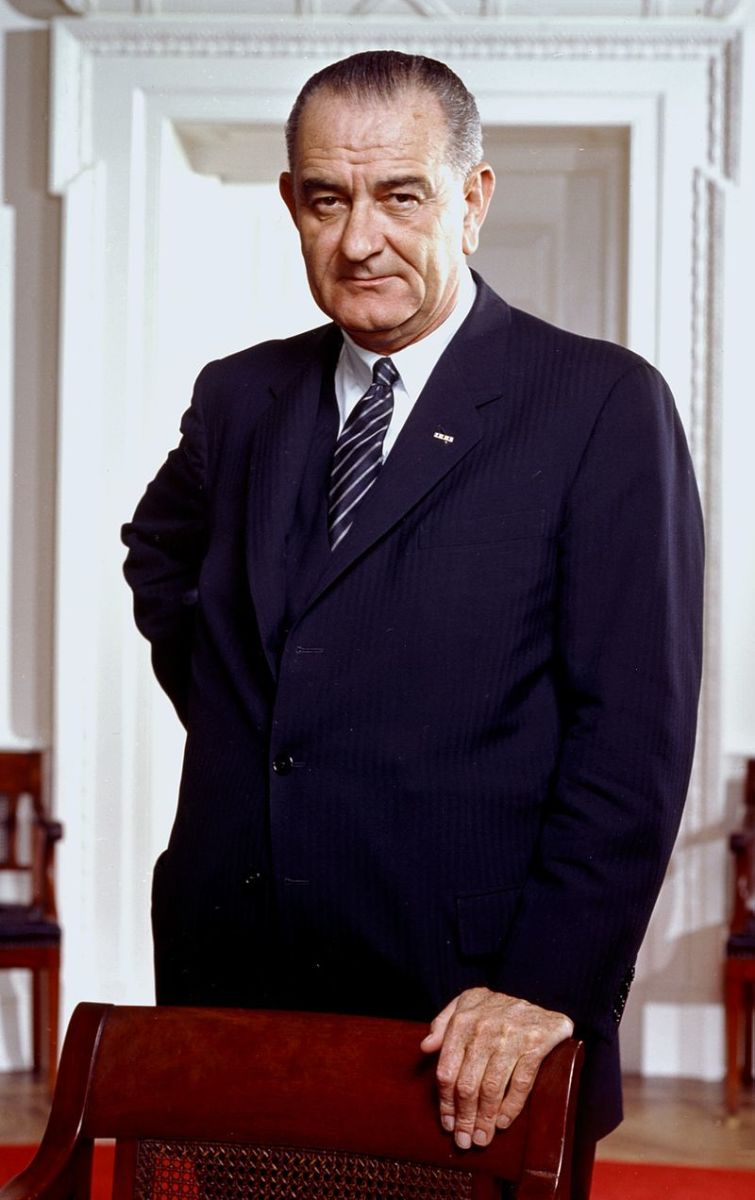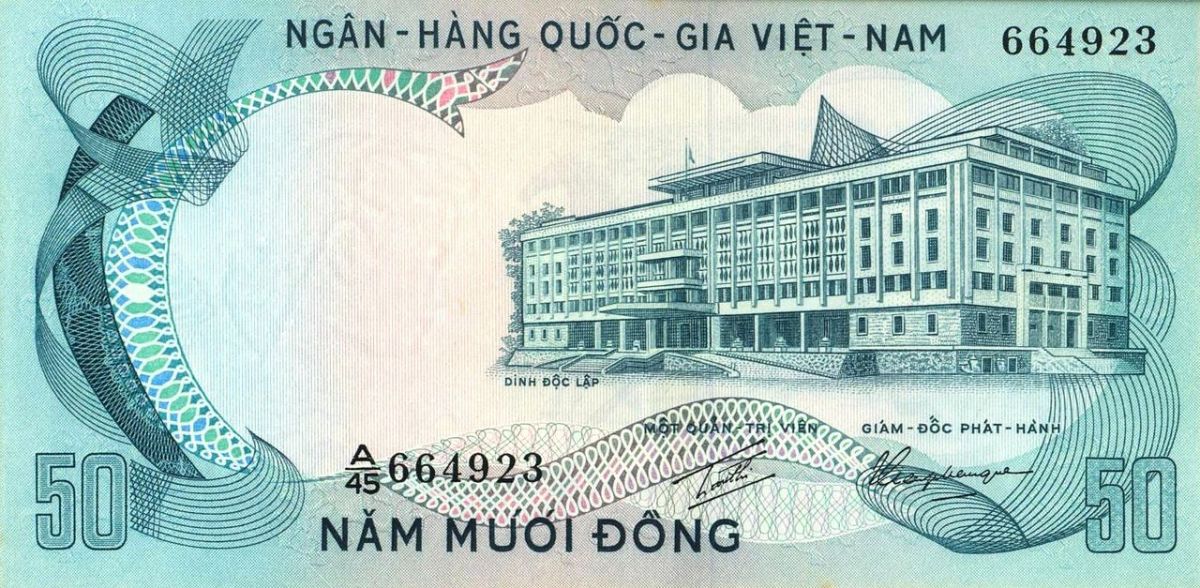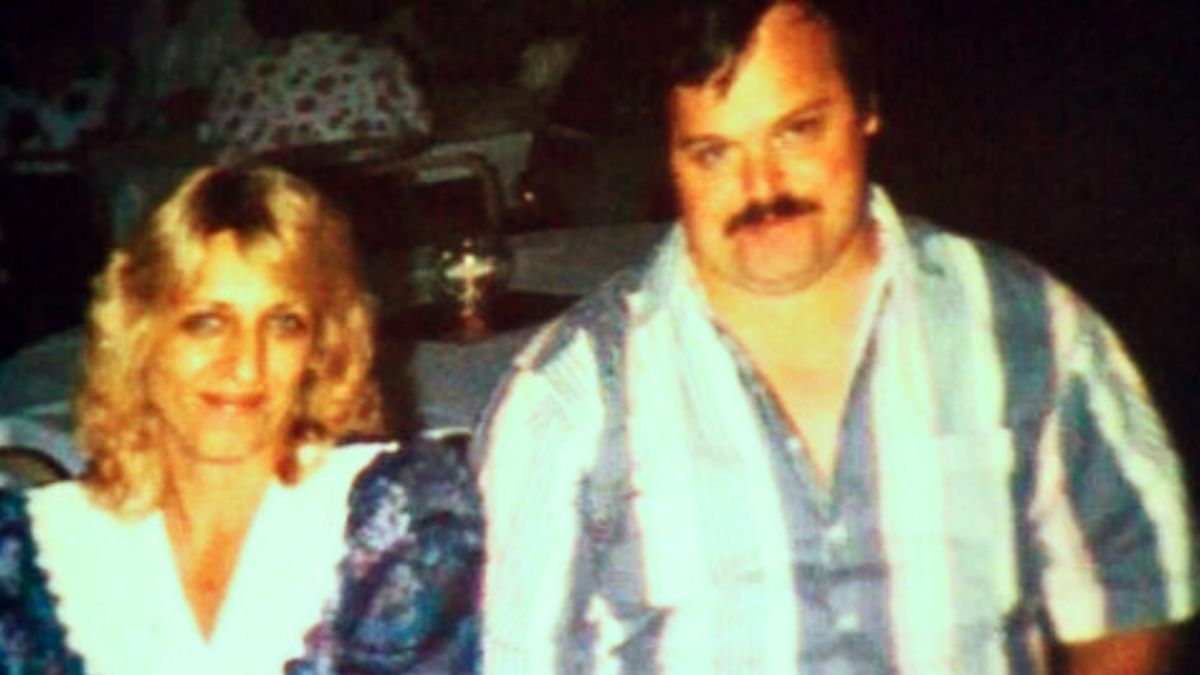Incident in the Gulf of Tonkin
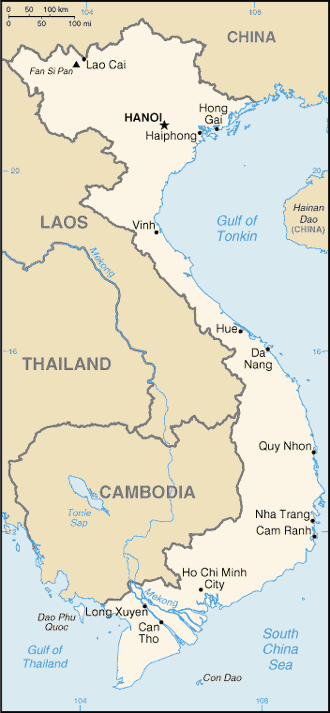
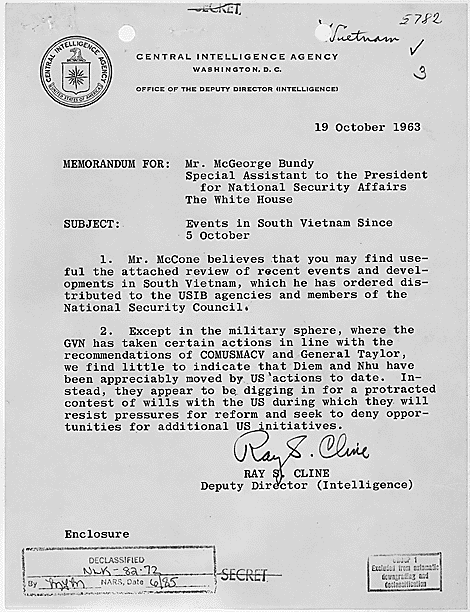
The U.S. in Vietnam Up to 1964
By 1963, the United States' involvement in southeast Asia was becoming increasingly tense. Years of covert U.S. activities supporting anti-communist South Vietnam had had little effect thanks in part to the poor Vietnamese leadership of the time (supported by the U.S.), and to the growing number of anti-government communist sympathizers in South Vietnam known as the National Liberation Front or Viet Cong. A coup in November 1963 that left the South Vietnamese leader Ngo Dinh Diem dead had been followed by another, less bloody coup in January 1964 bringing a suspicious and distrustful military junta to power. American involvement was a complicated and embattled question of diplomacy or firepower. It was determined that support of the new South Vietnamese leadership and "graduated covert pressure" from the U.S. by way of the CIA's Operations Plan 34-A was the best course. In June 1964 the U.S. political scene was a growing storm of social tension at home, and military tension abroad. Reconnaissance flights over Laos (neighbor to North Vietnam) had resulted in shooting and bombing. Much of Congress doubted the need for U.S. involvement. On the horizon loomed a presidential election for which White House and congressional posturing and planning were already in progress.
In a June 9 telephone conversation (recorded at the White House), President Johnson and Secretary of Defense Robert McNamara discussed the opposing opinions in Washington on U.S. involvement in Vietnam. Some in Congress believed the U.S. should get out of Vietnam altogether. Others believed the U.S. could escalate efforts without getting into the war, using diplomacy and only calculated amounts of necessary force. This was also the opinion of the U.S. ambassador to South Vietnam, Henry Cabot Lodge, whose name and role also figured prominently in earlier Kennedy discussions regarding the foreseen coup attempts of 1963. Still others supported a "seven divisions" invasion (the size of the Korean War effort). Johnson made it clear to McNamara that pulling out of Vietnam would not be an option, and that increased social work in South Vietnam, educating the American public as to our reasons for being there, as well as managing the political issues in congress were the next steps to take.
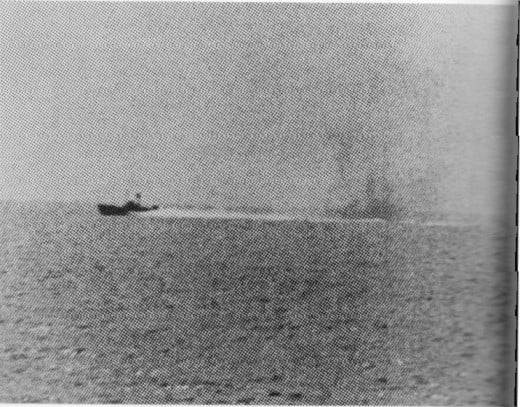
The Escalation To War in Vietnam
Ten years after the Geneva Conference, in August 1964, the United States would take a historic step in its battle against the spread of communism... within and around the small country of Vietnam. On August 1, 1964 South Vietnamese units in association with the covert operations of the United States destroyed a North Vietnamese radio installation. One of the American Naval ships (the USS Maddox) involved in disrupting North Vietnamese communication would be the target of three North Vietnamese torpedo boats one day later on August 2. Two of the three gun boats were destroyed; and the Maddox sustained little or no damage. The two sides still disagree on the location of the battle, with the U.S. remaining adamant that it occurred in international waters.
It was a perceived second attack on August 4, 1964 that was, and still is the subject of great controversy. While the president and secretary of defense McNamara were still gathering facts on, and planning a response to the events of August 2 in the gulf, confused reports of a second attack began to come in. A second U.S. Destroyer (the C. Turner Joy) was already responding to the Gulf of Tonkin, and tensions were high. It is believed that intercepted radio reports of the first event were mistaken to be orders for a new attack. This set in motion a plan of response including development of a list of air-strike targets in the north. The ensuing chaos resulted in conflicting reports from sonar and radar operators in a heightened state of alert, and widely unsubstantiated claims of enemy planes in the air and enemy torpedoes in the water. Patrols by air couldn't confirm enemy sightings or torpedoes, but only nearby lightening strikes. The destroyers returned fire at what is now believed to have been "shadows". By the evening of August 4 in Washington the response plan was confirmed; and news releases were spreading about the supposed second attack in the gulf, even amid growing doubt of the accuracy of the reports. In that time of confusion congress also gave the president the power to use force in any way he deemed necessary. This grant of power led to the immediate escalation of U.S. involvement, and the retaliatory air strikes commenced.
The President's Gulf of Tonkin Announcement
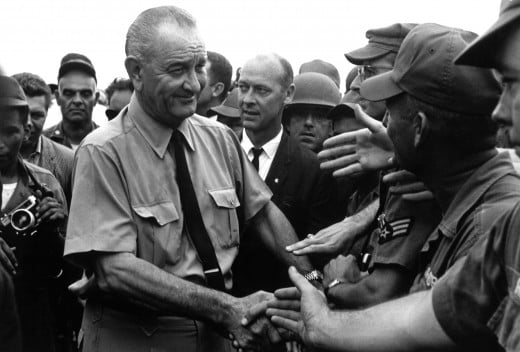
The Gulf of Tonkin Resolution and Its Effects
On August 7, 1964 the Gulf of Tonkin Resolution with only 2 dissenting senate votes guided America's "next steps" into the Vietnam conflict, giving full power to the president to "take all measures necessary to repel any armed attack against the United States and to prevent any further aggression ". These powers are what Americans expect the Commander in Chief to have when the need arises. The Tonkin Resolution itself is merely an affirmation from congress of his right and responsibilities in response to national security threats.
In question is the information and intelligence collected at the time, and the interpretation and use of them that followed. In 1961 covert U.S. involvement in Vietnam included some 2,000 Americans. Advisory and training personnel attempted to equip the South Vietnamese forces with the resources and skills to defend themselves. By the end of 1963 that number had grown to over 16,000, and even at this strength, it was becoming clear to many including the heavily involved CIA that positive results from these efforts were at least declining. The Viet Cong had the full support of Communist North Vietnam via the Ho Chi Minh Trail and other supply routes through Laos and Cambodia, and these supplies were never cut off. U.S. goals in 1963 of leaving the battle to the South Vietnamese were abandoned and the South Vietnamese never achieved their goals of corruption-free and effective leadership and military capabilities.
It was into this environment that the first 3,500 U.S. marines with the overwhelming support of the American people hit Vietnamese soil in March 1965. That number increased to 200,000 by December.
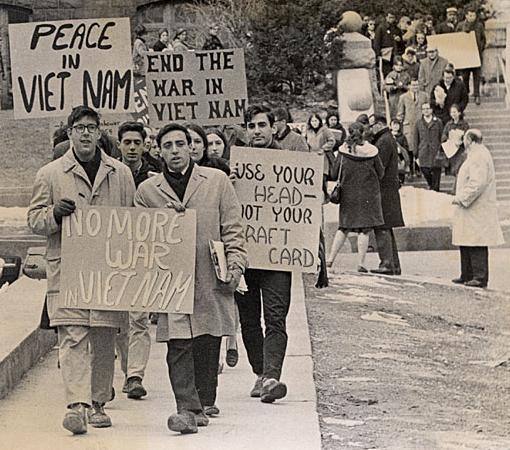
The Vietnam Action and the Aftermath
At the height of U.S. involvement in 1968, there were well over 500,000 American soldiers on the ground in Vietnam with no substantiated reports of success. It had become clear to many, again, that the escalation of American offensive firepower in Vietnam was not going to win the war. Domestic support for the war effort was rapidly falling; and 30,000 American deaths lent to increasing anti-war sentiment, protests and riots in the U.S.. Support for the war had dropped dramatically as casualties mounted, and the further escalation (including saturation bombing) that some analysts advised would be necessary for success was ruled out by the president who feared his domestic social agenda would also lose support. The U.S. was rendered ineffective in its original goals of stopping the spread of communism in, and bringing peace to the region.
The Gulf of Tonkin Resolution had affirmed the U.S. military that the President of the United States was ready, willing and expected to give them the guidance and resources they needed to protect Americans and the U.S. interests of "international peace and security in southeast Asia". Although it provided the legal means necessary to fight the war, it could never provide the intelligence, information or policies necessary to move forward with success. The Resolution itself was repealed by Congress in 1971. The number of U.S. troops in Vietnam was also drastically reduced in 1971, with the last American ground troops being removed in August 1972. It became clear during troop withdrawals that the South Vietnamese could not hold off the Viet Cong and North Vietnam without U.S. air power; and bombing continued, as did diplomatic negotiations. Bombing ceased with the signing of the Paris Peace Accords in January 1973, all U.S. military involvement in Vietnam. This also led to the exchange of POWs. The war continued in Vietnam, however, and the last American Diplomatic personnel were evacuated in a dramatic helicopter rescue effort as communist forces took Saigon on April 29, 1975.
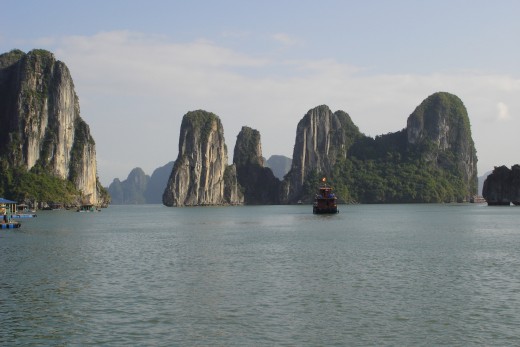

The Beauty of Vietnam
Vietnam Since the War
From Ha Long Bay in the Gulf of Tonkin to the Mekong Delta in the south, Vietnam is a beautiful country. Rural and city lifestyles have their places there, just as they do in the rest of the world. Old and modern live together. It was beautiful in the 1950s too. But it was a politically-divided country then, with military powers within and outside its borders in control. At the 1954 Geneva Conference more than two decades of Vietnamese time became divided at the 17th parallel . Life was different for those in the north and those in the south. Social traditions were not so greatly affected; but economically South Vietnam saw the growth of a capitalist economy. During U.S. involvement, economic and military support became the means by which many regions survived the war years.
The withdrawal of U.S. support and the reunification of Vietnam socially and economically was difficult for the Vietnamese in the south. Economic and social reform efforts of the 1980s shifted from a strictly centralized economy to a "socialistic market economy", and Vietnam has benefited by rapid growth in both tourism and exports. The institutional constraints of the communist dictatorship however, have held Vietnam in a state of economic decline in comparison to many other countries in the region.
© 2012 Mr. Smith

